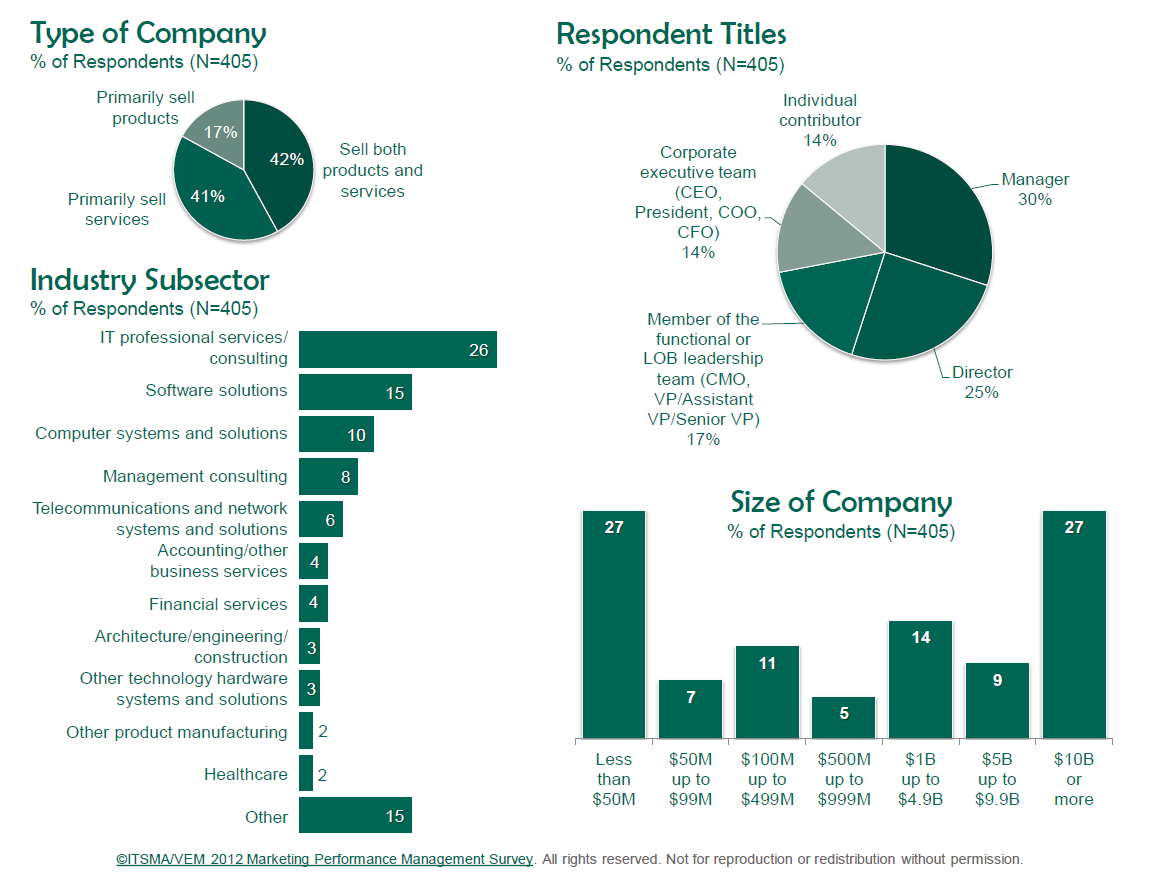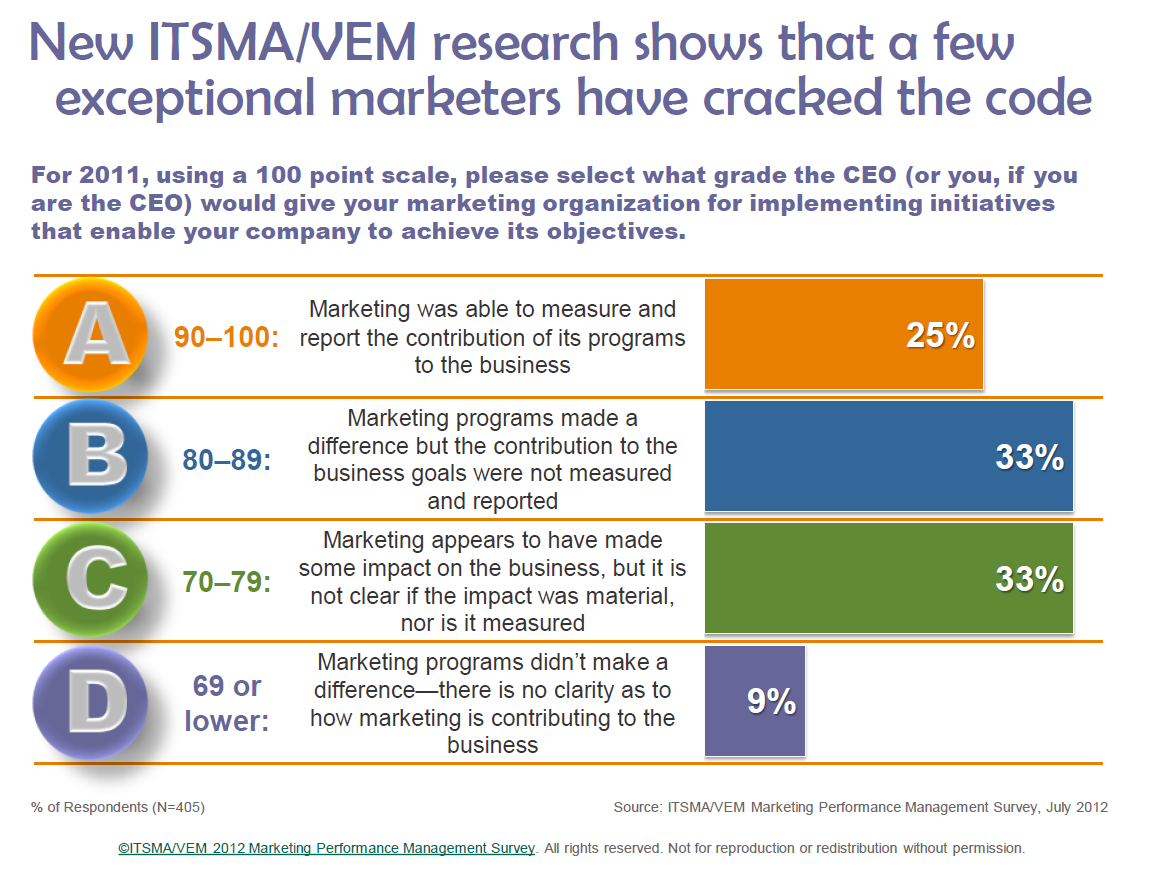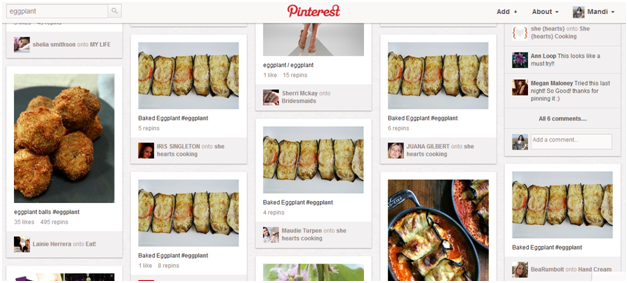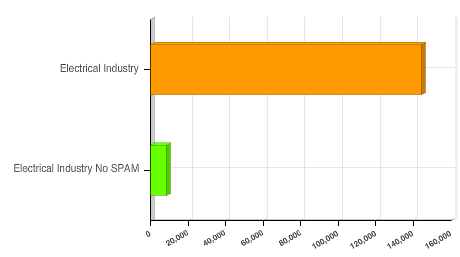Marketing Research: Only 25% of marketers can show value to the organization
Recently, I had the opportunity to speak with Julie Schwartz, Senior Vice President of Research and Thought Leadership at ITSMA (Information Technology Services Marketing Association), and Laura Patterson, President of VisionEdge Marketing. Both were involved in recent marketing research, 2012 ITSMA/VEM Marketing Performance Management Survey: The Path to Better Marketing Results.
The survey was conducted during the summer of 2012 via email and social media invitation through Twitter and LinkedIn, and included 405 completed surveys.
Here is a chart outlining details of the respondents:
All respondents were analyzed by company type, company size and by a self-grading system (grade results included, and note that “D” was the lowest possible grade):
- A – Marketing demonstrates contribution to the business: 25%
- B – Marketing makes a difference, but contribution is not measured (these marketers were considered “middle of the pack”): 33%
- C and D – Marketing may have an impact, but not known if impact is material (these marketers were considered “laggards”): 33% for “C” and 9% for “D”
Here are the key takeaways from the research:
- Marketing’s satisfaction with its ability to measure, analyze and improve performance is shockingly low
- Marketers are caught in a downward spiral as they report past performance to continually prove the value of marketing
- A few exceptional marketers have cracked the code; they excel across the board in data, metrics, processes, tools, analytical skills and reporting
- These grade “A” marketers can clearly demonstrate their value and contribution to the business
- The number of “A” marketers has remained relatively constant over time, but we see a decline in the number of “B” marketers
Because the heart of this research was marketing performance management, the self-described grades listed above were created by the key question: What grade would the C-suite give your marketing organization for its ability to demonstrate its value and impact on the business?













